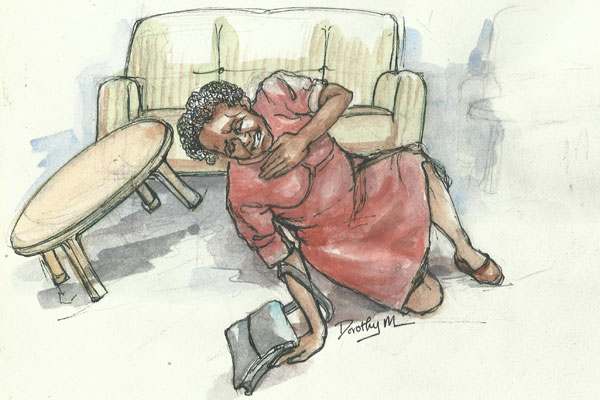Part II: Explaining unexplained deaths

What you need to know:
- The heart, like any other organ in the body, needs oxygen-containing blood to perform its function, and most of this blood is supplied through blood vessels, specifically, the coronary arteries.
Sudden death, in a good number of cases, has been attributed to a heart attack, also medically known as a myocardial infarction. Technically the heart attack is not a cause of death but rather the injury or disease that precipitated the attack.
The heart, like any other organ in the body, needs oxygen-containing blood to perform its function, and most of this blood is supplied through blood vessels, specifically, the coronary arteries.
Diseases of these arteries are common causes of heart attacks, and these diseases are collectively known as Coronary Artery Disease (CAD). Any condition that impairs or impedes the passage of blood through these arteries can potentially cause a heart attack. The most common of these conditions, arteriosclerosis, is narrowing of the lumen of these vessels due to accumulation of “fat” or fatty streaks.
Although not all heart attacks are fatal, some massive heart attacks can be fatal and when death is attributed to a heart attack, evidence of such a disease or injury will be found at a post-mortem examination.
The post-mortem examination
The diagnosis of a heart attack may be straight forward if an occlusion is clearly demonstrated at a post-mortem examination but challenging especially when there is no evidence of an occlusion of the blood vessels.
A proper diagnosis may require a thorough post-mortem and careful examination of the heart, including examination of the tissues of the heart under the microscope (histology).
The areas of the heart muscle that may have been injured as a result of the occlusion will be seen during a histology examination and this is very important in making a diagnosis of a heart attack
However the most recent developments in diagnosis of a heart attack at post-mortem are non-invasive, in that the heart may not be dissected out of the body, but special imaging techniques may be used to demonstrate the areas where the blood vessels may have been occluded. In some situations, these diagnostic modalities alone may prove inadequate or insufficient to explain a clinical suspicion of a heart attack.
Clinical diagnosis
Not all heart attacks will lead to death instantly; some patients die hours or days after the onset of a heart attack. These patients will have medical evidence of a heart attack, including the signs of the disease and the results of investigations carried out. Some of the investigations include monitoring the electrical activity of the heart and raised levels of chemicals, known as bio-markers, produced by the damaged heart muscles.
There are, however, other causes of injury to the heart other than a heart attack and caution should be exercised when interpreting such results. It is for this reason that the history of the illness is important. Not every patient with a heart disease will die of a myocardial infarction.
Acute occlusion
The most frequent cause of an acute occlusion of an artery of the heart has been found to be a thrombotic mass, including a blood clot, and this has been seen in approximately 50-70 per cent of sudden coronary deaths. The acute occlusion may trigger abnormal electrical activity of the heart which will result into death. In such a case the overt injury to the tissues of the heart may be difficult to see.
The general rule is that the main coronary arteries and their branches must be carefully examined at the post-mortem examination, not only to identify what may have caused the occlusion, but also to examine if the vessels are narrowed or not.
These vessels should be sampled out and examined under the microscope. When a lumen of a blood vessel is narrowed to less than 75 per cent of its expected diameter, this is considered critical.
Spasms
A blood vessel of the heart may undergo an intense constriction as a result of a spasm and this may cause occlusion of the coronary artery. The presence of an area of dead heart muscles could point towards spasm in the artery when no other explanation for the infarction is provided. Spasms have been known to occur in arteries that are occluded.
Spasms of the blood vessels of the heart have also been triggered by drugs such as cocaine and amphetamines, and physical and mental stress. These can, as a result, precipitate heart attacks.
Other triggers
Heart attacks may be triggered by other disease of the small blood vessels, especially when the heart is diseased. High blood pressure, alcohol, and diseases of the lungs may all affect the heart and diseased heart is more at risk of a heart attack than a normal heart. Surprisingly, even surgical procedures to correct an occluded blood vessel of the heart may trigger a heart attack.
Evidence of a heart attack
Irreversible damage of the heart muscle will invariably occur during a heart attack and this is the evidence that must be presented if a person is said to have died of a heart attack. The area of damage will indicate which vessel of the heart was responsible for the attack.




